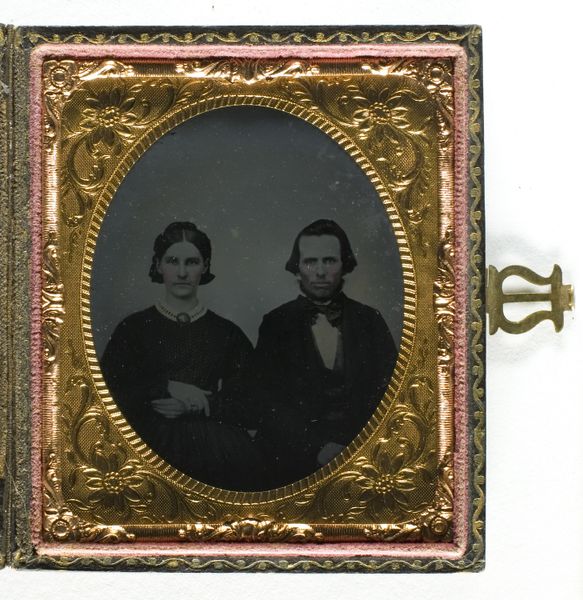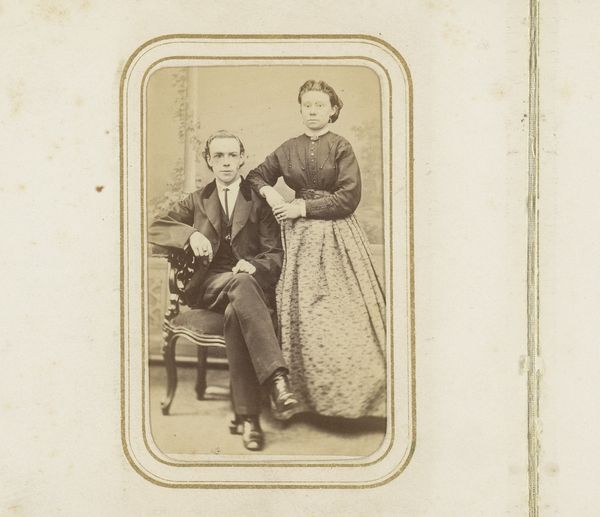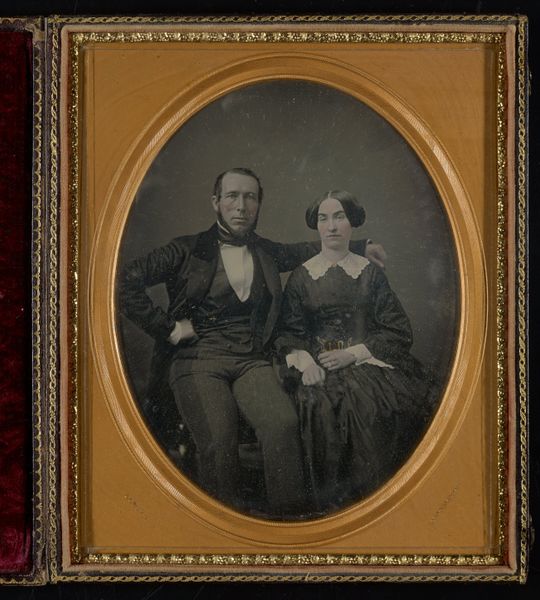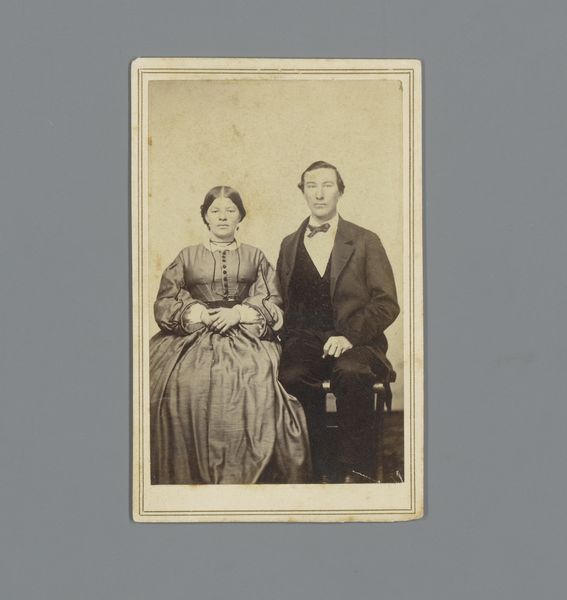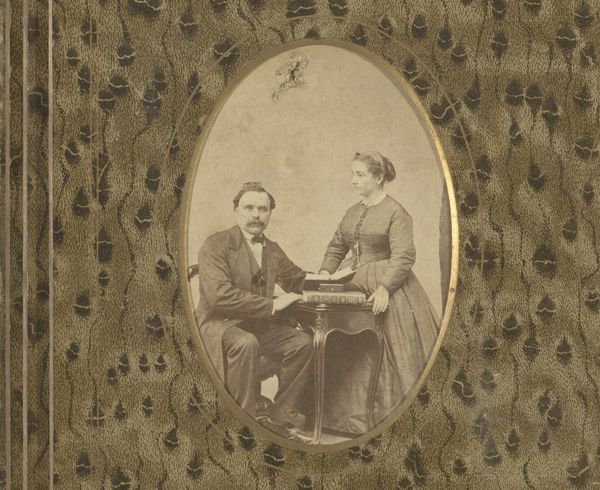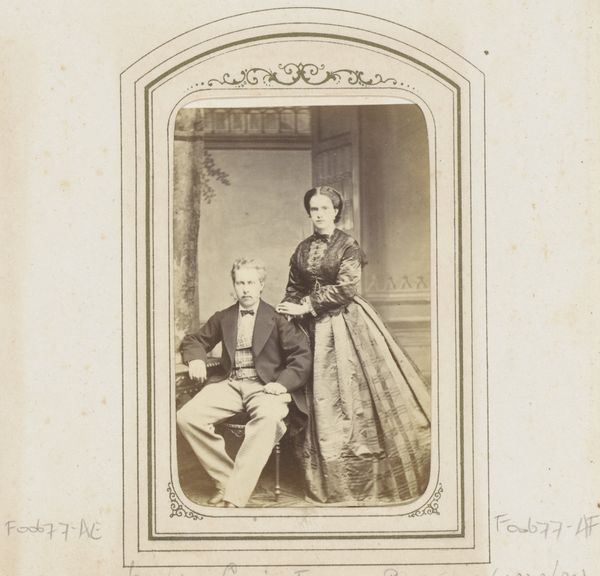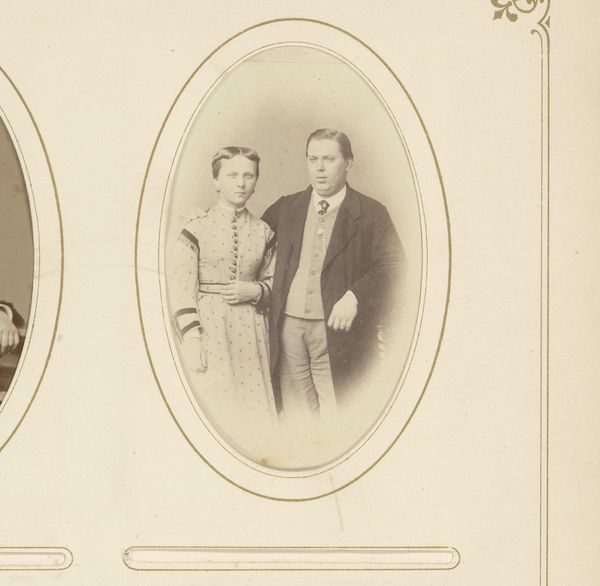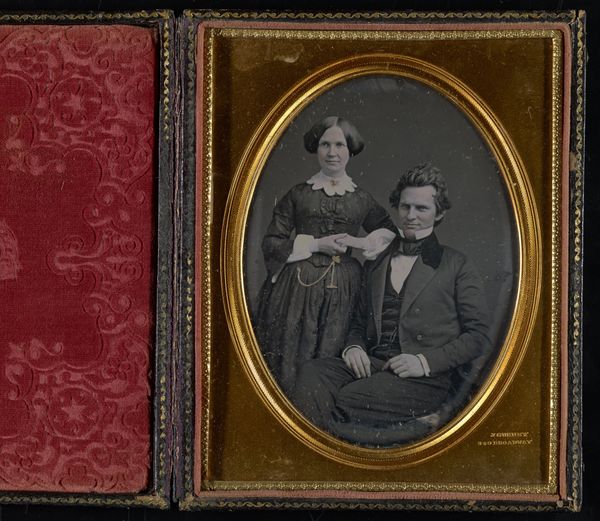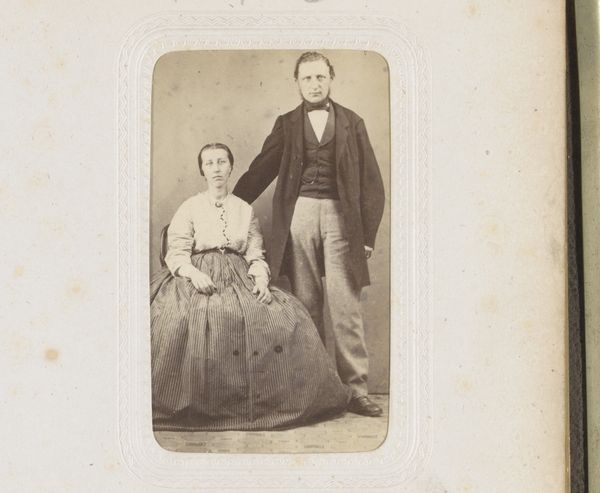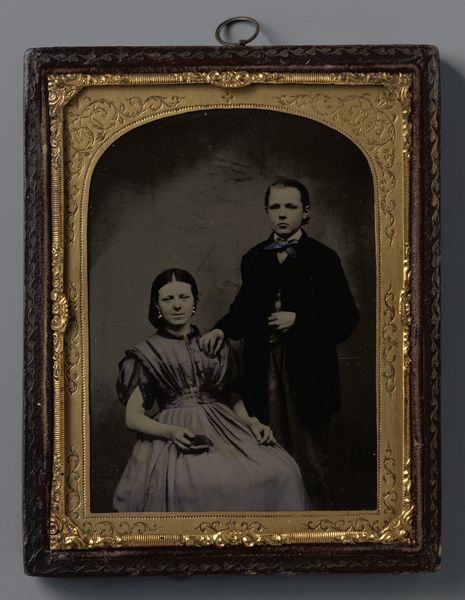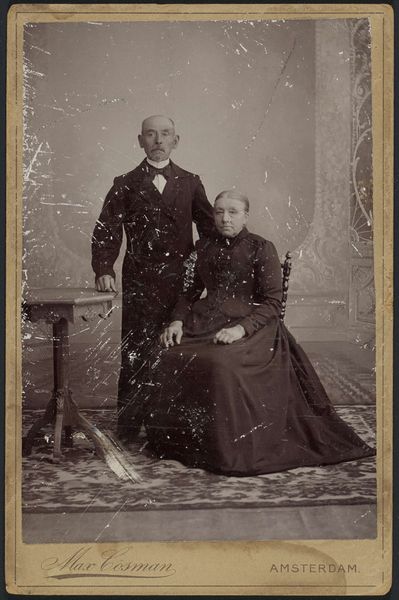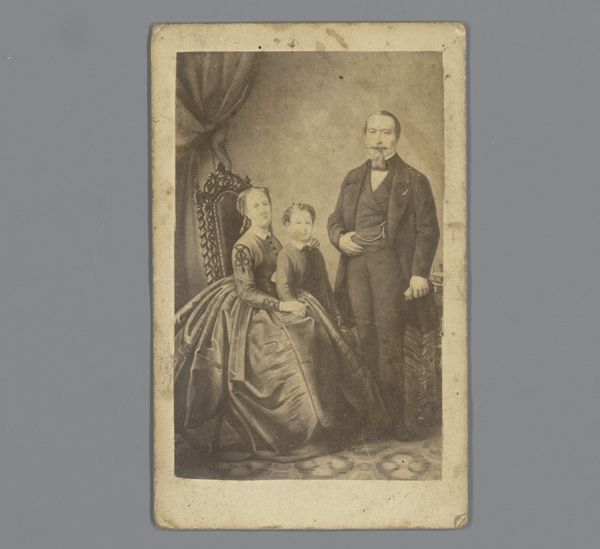
daguerreotype, photography
#
portrait
#
daguerreotype
#
photography
#
group-portraits
#
romanticism
Dimensions: height 94 mm, width 78 mm, depth 7 mm, height 90 mm, width 74 mm
Copyright: Rijks Museum: Open Domain
Editor: So here we have "Portrait of a Couple in Suriname" from around 1846, by J.L. Riker. It's a daguerreotype, and what strikes me first is the formality of the subjects but also the incredibly tactile nature of the metal plate. What do you make of it? Curator: The first thing I notice is the materiality of the daguerreotype itself. Consider the labour involved in producing a single image: the polishing of the silver-plated copper, the sensitizing process with iodine and bromine, the meticulous development with mercury fumes. And what kind of client was willing to purchase this technology and pose formally for it? Editor: It's interesting to think about this from the perspective of labour... because portraits at this time would have been the privilege of certain people who had enough means to do it. Curator: Precisely. Photography, initially, was enmeshed with class and commerce, right? Look at the details - the woman’s dress, the man’s suit. These are commodities, expressions of economic standing and, likely, aspirations. But the surface of this is not seamless: look at the blemishes and deterioration of the metal surface and the effect they bring on the subjects themselves. Editor: And by focusing on materials, the work moves past "portrait of people who wanted their portraits done", into a social statement about class, work, and... access. Curator: It encourages us to see the subjects within their economic and social setting, thinking beyond the aesthetics or sentimentality. It’s also fascinating how this shiny metal object circulates now as a digitized file: there’s something powerful and sad about an art object’s transition in the current market. Editor: I never thought about daguerrotypes that way. Considering the historical context of production changes everything for me. Curator: It gives another perspective that highlights socioeconomic structures!
Comments
rijksmuseum about 2 years ago
⋮
The young man is the 33-year-old Ghana-born Johannes Ellis, his wife the Surinamese Maria Louisa de Hart, then aged 19. The couple’s dress is rich and fashionable. According to tradition, the portrait dates from 1845 (the year they married), but, in fact, it must have been made in Paramaribo the following spring, when two travelling American daguerreotypists visited South America’s ‘Wild Coast’.
Join the conversation
Join millions of artists and users on Artera today and experience the ultimate creative platform.
